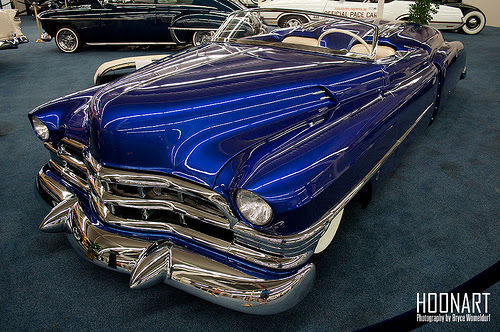For most of us gear heads, a car represents more than just a vehicle; they are extensions of ourselves, pieces of culture which help define who we are, and locate us in a society. It shows the world what “tribe” we identify with, whether it be American Muscle, JDM (Japanese Domestic Market), or German Tuner.
Most of you may have noticed that the three segments of auto culture that I mentioned have the name of a country in their title. Cars seem to represent not only this segment of the population, but their countries of origin as well. The Ford Mustang is inherently American, just as the Nissan Skyline will always be a part of Japanese legend, and the BMW M3 represents the best of German race engineering.
This line of thinking led me to develop the Decade of Dominance Theory, which states that each decade can be defined by the country that developed the most influential or dominant cars. Starting with the 1950’s, I will assign each decade a country which I believe had the largest impact on the global automotive industry.
First, a few disclaimers: obviously, this is a highly subjective exercise influenced by my own bias. I will attempt to temper this slant, or at least admit when it colors my decisions. In addition, there will be cars which I omit because I feel that they do not fall into the broad scope of the decade.
In any research there will be outliers which do not conform to the pattern. I understand that there are excellent cars made by many countries in all decades, but I feel the need to leave some out. I will do my best to address this and explain my reasons. If these omissions outrage or incense you, feel free to email Nyk Chatzis at [email protected].
Let’s face it, in the late ’40s, America had the capacity for great things. Veterans returning from the war in need of jobs and massive war-manufacturing infrastructure combined to produce the perfect automobile environment.
Automobiles could be produced faster, cheaper, and more reliably on the manufacturing plants that were used for military machinery. The post-war economy in America boomed, and suddenly the average family had enough money to buy a car. Many of these cars had such a lasting impression that they are still being carried on sixty years later. One might recognize names like the Chrysler 300, the Chevy Impala, and the Chevy Corvette. All of them live on today as an incarnation of the original vehicle, and without the ’50s we would not now have the monster known as the C7 Corvette.
The development of large family sedans is a hallmark in this era. In order to move around the wife, kids, and dog, a man needed to own the latest family cars from Desoto or Ford. Cadillac and Chrysler began showing the large fins on their convertibles; recognized around the world as a symbol of luxury and power. Purchasing an American-made car was quickly becoming the ultimate goal for the average person.
Chevrolet produced the famous Tri-Five vehicles (any Chevy produced between ’55 and ’57) which are still the ultimate toy of car collectors and hot rod enthusiasts. Since most came fitted with an excellent small-block V8, they could be easily modified to produce more power and more torque, making them the perfect for the street or the strip.
In short, American car production in the 1950s ignited an entire nation, and spurred the world into the era of quality car building. Up until this point, cars were built by hand or on questionable assembly lines. But now, factories used dedicated hardware to churn out some of the best automobiles on the market. These helped to define Americans in the ’50s as consumers: middle class workers with disposable income and solid family values. They loved Detroit steel, the rumble of a cross plane crank V8, and they loved America.





















































